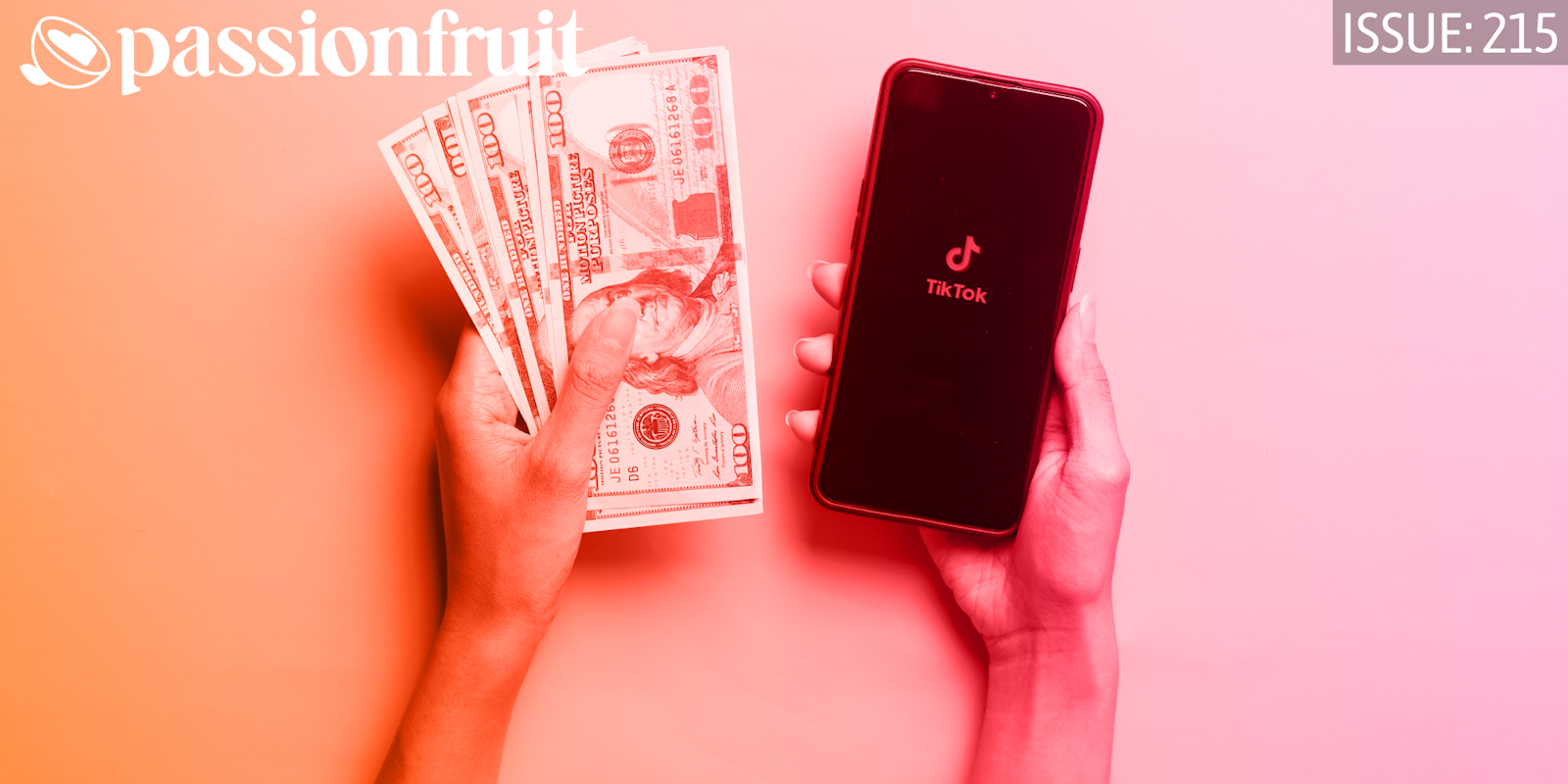
When the average person thinks of how much money content creators make, they often picture multi-millionaires — taking luxurious brand trips, living in sprawling mansions, with millions of adoring fans blowing up their comments section with love and sometimes hate.
This is part of the reason why so many kids are joining creator summer camps in droves. According to a 2023 Morning Consult poll, a whopping 57% of Gen Zers said they’d like to be an influencer if given a chance.
But this stereotype of fame and fortune is far the truth of how much money most content creators make.
Take this week, for example, when popular TikToker Reesa Teesa revealed she’s “not quitting her day job” anytime soon. Her viral, 50-part “Who TF Did I Marry?” series helped her gain over 3 million followers in a matter of two weeks. But in a recent video, she said she hasn’t been able to make much money from it due to TikTok’s limited monetization offerings.
It’s not surprising, considering many influencers reported making only “pennies” from hit videos on the platform.
“So for the people who think I’ve made 80-something-thousand, a hundred thousand, three hundred thousand — I am so sorry to disappoint you, but the actual number is nowhere near.”
— Creator Reesa Teesa on TikTok.
So, how much do content creators really make? Sure, the richest YouTubers and TikTokers like MrBeast and Charli D’Amelio have made millions. They’ve expanded their businesses, becoming media titans. But the reality is millions of other people working professionally as creators make nowhere near that much.
In one Linktree survey from 2022, researchers found that only 12% of full-time creators earned more than $50,000 annually. In comparison, the average U.S. annual income for working adults in the last quarter of 2023 was $59,384, according to the U.S. Bureau of Labor.
On top of this, creators operate in a highly unregulated industry. They have unpredictable incomes, making it difficult to plan for health insurance and paid time off. They struggle to get the platforms they rely on to listen to their feedback. Harassment and stalking are common threats.
Furthermore, the social pressures to always be online and turn yourself into a personal brand can take a toll on mental health. It’s the reason that even the most popular creators burn out.
Take influencer Ana Wolfermann, who said earlier this month she’s stepping away from a full-time career as an influencer due to the pressure to share too much of herself. Or Twitch streamer Hasan Piker, who spoke this week about how socially draining putting yourself online all day can be.
Arguably, most importantly, child labor laws are also virtually non-existent for social media work. This is despite the growing evidence that being on social media poses mental health risks for young children.
A chilling report this week from the New York Times, which analyzed 2.1 million Instagram posts and over 100 interviews of parents and children, discovered a horrifying ecosystem of young girls working as Instagram influencers. These girls often get stalked and harassed by predatory men, and arguably exploited by their Instamom managers.
Devastatingly, in most states, these children aren’t even entitled to sue their parents for their earnings from social media work.
According to the Times report, the most financially successful child influencers they studied earned upwards of $3,000 for a single sponsored post. Or, 99 cents to $19.99 for paywalled content. But financial gain was “elusive” for many others, who made little besides free or discounted clothes in exchange for posts.
In interviews, parents of these children said they often paid for styling and attendance at fashion events. They described these costs as “extracurricular activity” expenses “serving to create social media résumés that will follow into adulthood.” In other words, in most cases, all the work by these children was merely in the hope that there’s a big payday somewhere down the road, in the near future.
Currently, the U.S. Census Bureau doesn’t even have a categorization for people employed in social media work in one of its 22,607+ listed industries, even though Goldman Sachs estimates the creator economy to be a $250 billion industry.
The lack of government support and recognition is probably a reason why the desire to form a creator union is so high — according to a 2024 Kajabi report, 46% of top-earning creators surveyed said they would join a union in the future. On top of that, an additional 37% of creators surveyed said they would “consider” joining a union.
Our goal here at Passionfruit is to bring attention to these pressing issues in the creator landscape. And, to help creators take back some of that agency (and money) by arming them with tools and resources. With more and more internet culture journalists getting laid off every day, we think it’s more important than ever to cover the social media frontier.
Happy creating! And thank you to all of you who have been reading.
– Grace Stanley, Deputy Editor
In Today’s Newsletter:
- Freedom to Tweet or to Delete? Supreme Court Considers the Legality of Social Media Bans
- Taylor Lorenz on THAT Viral Interview with LibsofTiktok
- Turkey Bans Twitch in Anti-Gambling Crusade
- Roblox Paid Out $741 Million To Creators in 2023
- Creators Say Sora’s AI Videos Are a Little Too Real for Comfort


